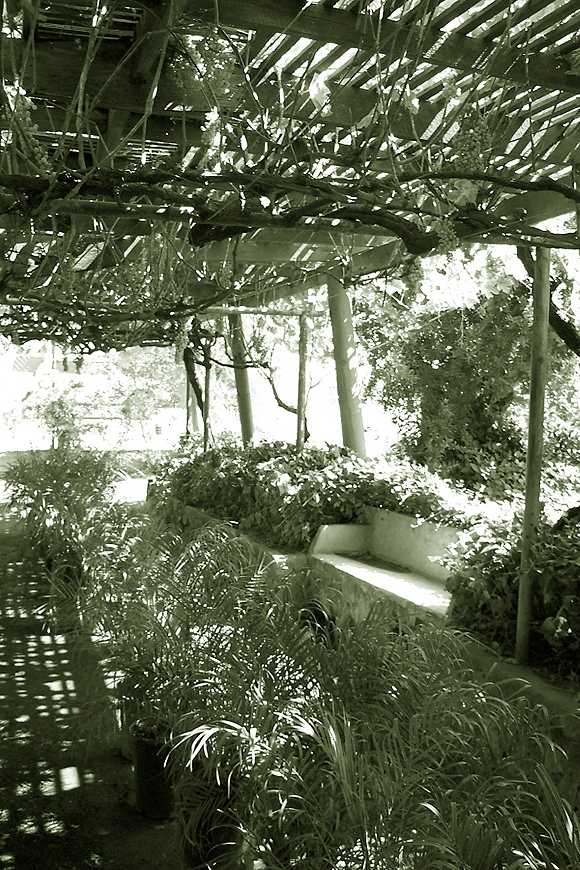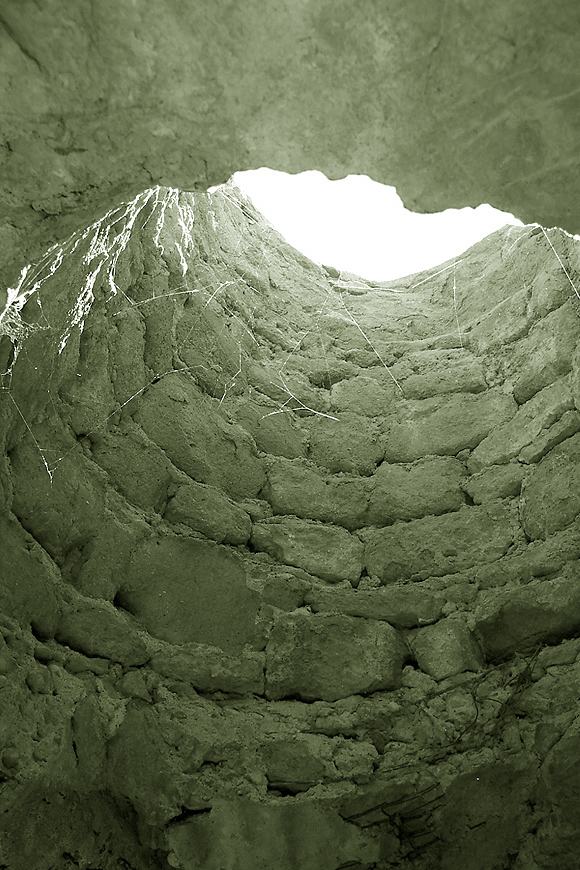The Immigrant Story
Every city in America has special places that tell stories of extraordinary lives unfolded along the path that connects the past to the present. From the foundation of this country to the beginning of the twenty- first century, people have left their nation of origin to cross some formidable body of water in hopes of a “better life” than the one foreseen at home. They have emigrated from every continent to settle here, their influence binding thousands of cities into the one nation called America. Their journeys—our journeys—tell unique stories of trial, failure, injustice, and success.
The American city is a living museum; a resilient organism that continues to grow and transform with each new generation. The genius of the American city, and America itself, is that our strength truly is given rise from our vulnerability. Immigrants are among some of the most vulnerable inhabitants of our cities. American cultural practices are foreign to them. Often they have no representation, do not understand the language spoken here or the modalities and norms of commerce. Immigrants are often suspicious of the governmental mechanisms that are in place to protect them and provide opportunity. It’s difficult to be an immigrant.
Objects and places left behind by immigrants bring richness and beauty to our cities. These places tell American’s story vividly. Often, an intangible quality lays the groundwork for quiet reflection. Perhaps it is when one knows the story behind the place that it becomes personalized. Time and memory separate those of us who have grown up here immersed in “our culture” from those who journeyed here, leaving behind the places that held their ancestry. Our unfamiliarity with the condition of the world and the spirit of the times in which these places were built triggers reflection. As we grapple to comprehend what inspired our predecessors to build, we imagine ourselves placed in the midst of their journey. Reflection then engages our senses, memory, and values.
The Underground Gardens
From its formative years, Fresno has been a launching point for immigrants drawn to America by the promise of land ownership. Over 100 languages are spoken in Fresno County, a testimony to the success of those who have come. The Forestiere Underground Gardens have long been a part of the collection of places that define Fresno through the power of the immigrant story. The Gardens are a place of solitude and reflection; reflection focused not on self, but on the past, the place, and the story.
Sadly, the Gardens are a forgotten place. Once surrounded by one of the world’s largest fig orchards, its neighbors now include a freeway overpass, an In-N-Out Burger, and Harley-Davidson of Fresno. Yet a visit to this historic landmark continues to offer an encounter with the “inside” of the earth, time as recorded in layers of geographical history, and a conception of space for human dwelling that is alien to traditional western domestic patterns (although built by a “westerner”). The intertwined relationship that exists between the built and natural orders is reminiscent of Pueblo villages, where there is no separation between life and its spatial context.1 The Gardens demonstrate how one man lived in spaces defined by the basic life-giving elements of earth, water, and sky.
Baldasare Forestiere, an Italian immigrant from Sicily, came to Fresno in 1900. Like countless other immigrants who came to California to farm, he soon realized that the land he purchased near the San Joaquin River was predominantly “hardpan,” an impervious, naturally cemented soil layer that runs in veins of up to twenty feet in depth close to the surface throughout the Valley. Hardpan is not suitable for farming.
Given the blistering summer heat and the unsuitable soil conditions for farming, Forestiere turned his attention from livelihood to shelter. Rather than accept defeat by the hardpan, he imagined that living below the surface of the land could be more pleasant than living in a traditional wood framed structure, in which the temperature could exceed 100 degrees most days in the summer and dip below freezing on winter nights. Over the next 40 years of his life, Forestiere sculpted the layered subterranean strata with painterly vision and quixotic ingenuity. His gardens are a series of subterranean grottos, chambers, alcoves, and courtyards, which feature varietal plantings, arbored grapes, and exotic fruit trees. The entire complex is approximately twenty-two feet below ground level and includes over 800 feet of circuitous pathways interconnecting living quarters with three large courtyards, an auto tunnel, and an aquarium of sorts.
Romance
Romance is a powerful human force, combining thought, will, creativity, and action. In A Psychology of Building, Glenn Lym writes, “Day to day, year after year, we carry on a romance with space. This romance leads us to seek our place and build on the face of the Earth.”2 The Underground Gardens began with Forestiere constructing a cellar to escape the Valley heat. His romance with the notion of carving negative space from within the earth to create pleasant shelter drove Forestiere to invent—and live in—an evolving experiment. In this place, enveloped by the earth, one begins to understand how romance with an idea is absolutely necessary for creative action.

The walls of Frank Lloyd Wright’s Taliesin West are embedded with massive stones serving as abstractions of the Arizona Desert. At the Underground Gardens, fractured hardpan cobbles from the excavation and indigenous cement were used to line walls, domes, Romanesque arches, and light shafts. Wright said of Taliesin that it belonged to the desert “… as though it had stood there during creation.”3 Taliesin embodies Wright’s dictum that building must be “of the site not on the site,” by both its formal gestures and its materiality. By comparison, the Gardens are not “of the site,” they are the site. A complete marriage unites dwelling and site by erasing the membrane between architectural space and nature. Both Taliesin and the Gardens achieve a sense of quietness and allow for reflection, because both respect the earth in a profound way. In both cases, the spoils of excavation are dignified as finish materials. They are what one touches and experiences, reinforcing human dependence on the natural order.
The Artifact
A sense of non-scientific experimentation fills each chamber. Forestiere placed conical light shafts off center from the respective chambers below. The incoming light bathes the cemented strata walls of the chambers, highlighting the soft, variegated hues of the earth. By manipulating the diameter and the angle of the light shaft cut through the soil layers above, Forestiere varied the quality of natural light washing the surfaces below, animating the experience of each chamber. Darker passageways of differing proportions connect the cool, soothing chambers and courtyards. There is a theatrical quality about the way daylight is admitted in an approach reminiscent of Le Corbusier’s Monastery of La Tourette, where the manipulation of light is an integral component of the architecture.

The Gardens stand as something more than a truly vernacular architectural expression, unique to the place and spirit of the early twentieth century in the San Joaquin Valley. While visiting, one loses connections with the constant pressing of the here and now while being embraced by the earth, glimpsing the sky, and only sensing the muffled sound of the twenty-first century above. This is a place of reflection focused on history, not self. It focuses our view to an immigrant who did not accept defeat but invented a pure archetypal response to the challenge of living in a harsh environment.
For any artifact to be valued, it must be understood in the context of its meaning to those who created it. Each subsequent generation is enriched by the memory of those who have contributed to the advancement of culture through artifacts left as historical records. Baldasare Forestiere’s romance with his idea, creating a dwelling within the earth in direct response to the climate, remains as a vivid reminder of how the immigrant spirit has contributed to American culture. Fresno has forgotten the lesson taught by Forestiere’s experimentation. Perhaps we all need to seek out and find these artifacts in our communities, celebrate them, and reflect more on the immigrant stories that continue to teach us about romance.
1 Vincent Scully, Pueblo: Mountain, Village, Dance (New York: Viking Press, 1975), p. 9.
2 Glenn Robert Lym, A Psychology of Building: How We Shape and Experience Our Structured Spaces (New Jersey: Prentice-Hall, Inc., 1980), p. 6.
3 Grant Hildebrand, The Wright Space: Pattern and Meaning in Frank Lloyd Wright’s Houses (Washington: University of Washington Press, 1991) p. 115.
Author Paul N. Halajian, AIA, is a principal of The Taylor Group Architects of Fresno. He holds an M. Arch. from UC Berkeley and is on the editorial board of arcCA. After working in the San Francisco office of EHDD Architects, he returned to the San Joaquin Valley to become actively involved in the urban and architectural transformation occurring in the region. His practice is working on a number of public libraries and university projects throughout the Valley, as well as master plans for revitalization of downtown residential neighborhoods in Fresno. Photos by the author, except as noted.
Originally published 4th quarter 2003, in arcCA 03.4, “Reflect Renew.” Re-released in arcCA DIGEST Season 10, “Other Beauty.”








